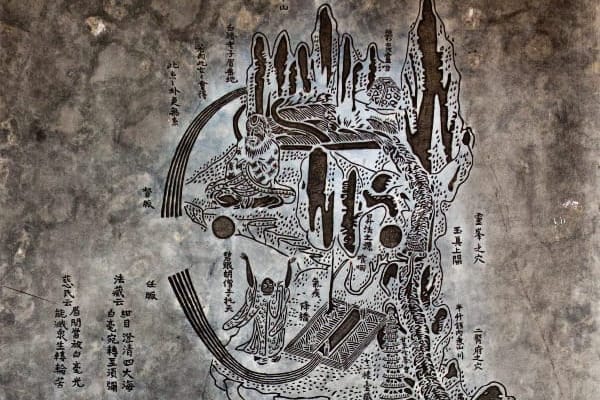The Need For Practice
Self-mastery and holistic health through the practice of Gongfu, Neigong, and Qi cultivation. Dive into the philosophy of "teaching what you don't know" and embracing every attempt as a success in martial arts training.

My teacher shared a quote from an unknown other, who said:
"I teach what I practice, I practice what I don't know, thus I teach what I don't know."
We are engaged here in research, in discovering possibilities within practice. The feeling of practice is akin to riding a bicycle: once it's embodied, once you know how to do it, it's hard to imagine what it was like not to know.
So what am I practicing?
Cultivating oneness of 神 shen, so 精 jing and 氣 qi are unified. This is harmony. Material distractions shake and disrupt the jing. Immaterial distrations agitate the qi. Jing is crystallized energy within the body. Qi is everything that moves. Jing and Qi exist on a continuum between dense and ethereal. Jing and Qi come together. Qi solidifies, Jing liquifies. That is hard and soft interacting, harmonizing.
This is the practice I am adopting. I don't know yet what it means.
The means and ends together form a constellation called practice. Repeating a set of actions, intentions, associations, is both a way to accrue skill and a fully integrated endeavour in and of itself.
I am learning how to practice for myself. I've been doing it as if there's anything to prove to anyone other than myself, as some source of external validation. There's so much flux in my life, and the words to make sense of it seem limited, fail to get at the experience of each day.
I am surrendering to training gong fu (kung fu) as a way to attain health, but this goal is only as alive as the process of practice. That is, reiterating and reapplying the directions of 內功 (neigong; internal strength).
From the North American Tang Shou Tao training philosophy:
These rules are simple and straightforward, but not easy to implement. Some examples of these rules are: every movement must begin and must finish with the breath and the breathing must always be easy and smooth, not forced. The whole body must move together, ”everything moves or nothing moves.” The tongue is on the roof of the mouth, Huiyin is lifted and Baihui pushes up. The body must never be allowed to become stiff. By following these instructions, the body naturally develops strong and healthy qi. It is as simple as that and this is the emphasis of qigong and neigong.
Insofar as I am getting up each day and trying to do these things, I am succeeding. The success resides in the attempt rather than the outcome, because the outcome is the attempt. This means that doing it wrong is preferable to not doing it at all by an infinite margin. It's the difference from Zero to One.
My days are full. 6 hours, 5 hours, 4 hours of gongfu training. The work nourishes me beyond words. My body's needs are met and surpassed by the complex choreography that I am inscribing into it. The movement patterns, the mode of internal organization and re-arranging. It is beauty, it is blissful.
Choosing training above the rest means moving away from other devotions. It means that I've taken stock of what matters to me and found that this training calls to my heart, mind, body, soul, more than the rest. Over time the river of practice will reshape the bedrock of my person. I am here to allow myself to be changed.
To the extent that is possible, I endeavour to know myself and my many parts. Each noticed impulse is acknowledged, welcomed, and accepted as it happens to be. Nothing useful comes from denial. So I ask myself, how can I make a practice out of noticing? Which will result not in shame, but instead in an integrated wholeness of being? This is cultivating acceptance. The inner landscape's got a unique topology, different in the geography of every body. The accumulation of experiences, born of ancestral and past lives, shape me as I am. What I'm trying to do with gongfu, contact improvisation, and The Responsive Body, is create opportunities to be serious about practice without taking myself seriously.
This is an act of dreaming. Can I imagine a life of training? Of keeping the inner commitment to practice each and every day, not by coercion, but by devotion to the art of being a human body?
My commitment amidst all of this is still healing. I'm trying to account for the unknown factors in the body. I'm trying to account for decades of antibiotics abuse. I'm trying to account for 蠱 Gǔ, "work on what has been spoiled." I am the process of erosion. I'm trying to make the sense felt. I'm trying to look at the darkest places.
This is self giving consent to self, to be with the complexities that arise from a process that exceeds its daily commitments. I can only live each moment, but a tapestry of renewal emerges by stringing moments together. This does not get any easier. Practice is both devotion and grieving.
This is the way of health. I am attempting to live without "why?"– that is, to allow the need-driven impulses to carry me through, to accept the evolution of each day. Asking "why?" equates to asking "why bother?", and serves no purpose. I am engaged in self-creation. Either I've chosen a path, or it was chosen for me at birth. The distinction is unimportant, less important than the practice.